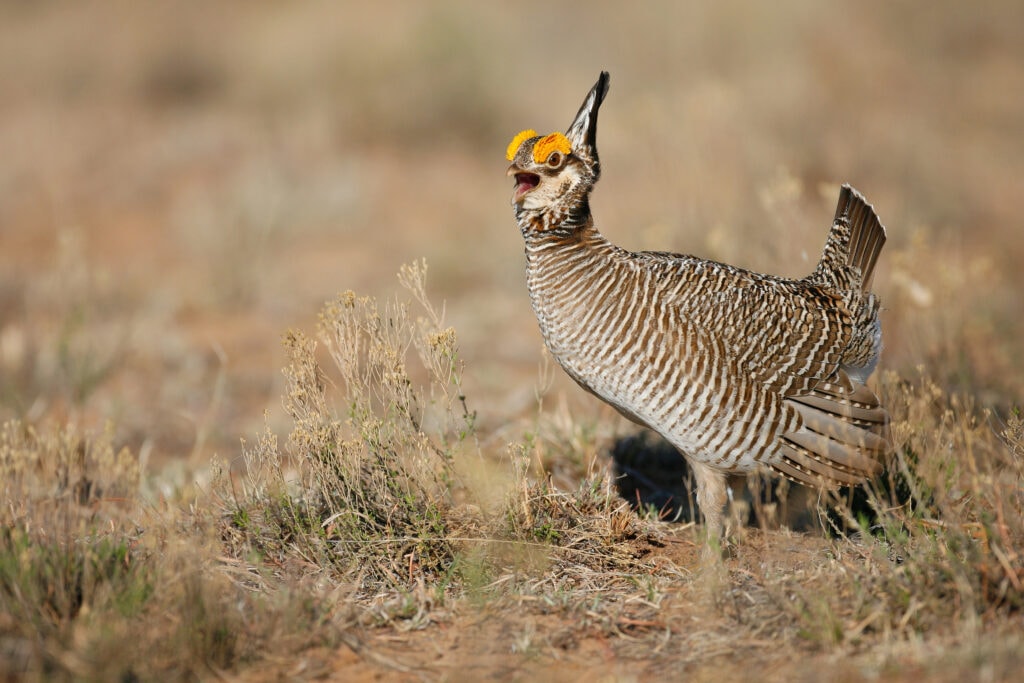Since 1995, the Center for Biological Diversity has been fighting for protections to be put in place to protect the Lesser Prairie Chicken. After decades of lawsuits and strife, this was finally brought to fruition in 2022 when two distinct population segments, or “DPS,” were listed under the Endangered Species Act.
Related Article: 500 Million Birds Migrating Across the United States
The Lesser Prairie Chicken is a species of grouse that is similar to the Greater Prairie Chicken, but smaller in stature. Native to the southern sections of the American Great Plains, the Lesser Prairie Chicken now roams a very limited habitat within this region as the appropriate habitats shrink and the Lesser Prairie Chicken population dwindles. Conservation is a very dire concern for this bird, which the Audubon Society lists as a “priority bird.”
Despite this, the battle to list the Lesser Prairie Chicken under the Endangered Species Act has been slow and difficult. For those involved in the conservation of this bird, this makes a senate decision from May 3rd all the more frustrating. After less than a year of protection under the Endangered Species Act, the senate moved to delist the Lesser Prairie Chicken.
From a strictly conservation standpoint, the decision to delist the Lesser Prairie Chicken is nonsensical. The Endangered Species List is a list of endangered species. The Lesser Prairie Chicken, which has declined by as much as 90 percent of its former population, is almost certainly endangered. Including it on the Endangered Species List is factual. For detractors, though, the Endangered Species List’s protections involve too many regulations. Republican senator, Roger Marshall of Kansas, argues that the protections involved in this act would restrict the oil and gas industries and may affect ranchers and farmers in the area.
Senator Marshall argued that a drought in Kansas was the major contributor to the decline of these birds, rather than human encroachment and land management practices. This does not hold water. Lesser Prairie Chickens rely on native grasslands to survive. The disappearance of these grasslands is a land management concern and is one of the biggest contributors to the decline of these birds. A decline which has been on the radar of conservation groups since the 1980s.
The vote to repeal the Endangered Species Act protections of the Lesser Prairie Chicken passed by a narrow majority of 50 to 48 votes. While Biden has expressed intent to veto the repeal, for conservationists this outcome is exhausting. After decades of petitions and lawsuits, the Lesser Prairie Chicken is once again staring extinction in the face without the protection of the Endangered Species Act.
Popular Article: Phillip Island Residents Limit Artificial Lights to Aid Shearwater Chicks

